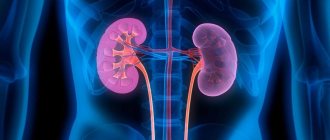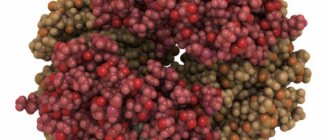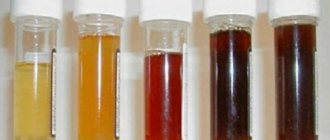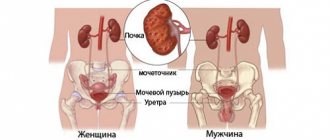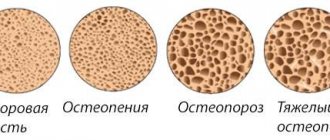Indications for analysis
The study of biological fluid using the Rehberg method is prescribed to patients who are predisposed to the development of pathologies in the kidneys.
The results of the analysis will help assess the condition and quality of functioning of the organ, determine the degree of influence of nephrotoxic drugs, and detect kidney diseases.
Patients who have symptoms of:
- high blood pressure;
- cardiopalmus;
- formation of edema on the face and limbs;
- decrease in daily urine volume;
- cloudiness of urine, the presence of purulent impurities in it;
- pain in the lower abdomen, weakness and nausea, which indicate the presence of intoxication;
- frequent seizures.
General concepts about the Roberge test
Tests to determine the concentration of creatinine in urine and blood are of great diagnostic importance. These types of examinations are called hemorenal examinations, one of which is the Rehberg test. The conventional unit for this analysis is clearance - the purification coefficient, which shows exactly how much plasma can be cleared within one minute.
With the help of this diagnostic examination, it is possible to identify various diseases of the urinary system, because both reduced and increased levels of glomerular filtration rate of the kidneys indicate the presence of certain disorders. The material for the study is blood and urine, the collection of which is carried out taking into account certain requirements.
Preparing for the test
Before performing the procedure, the patient must fulfill a number of conditions:
- avoid significant physical activity for several days the day before;
- Avoid drinking coffee, strong tea, and alcoholic beverages;
- reduce the amount of meat in the diet;
- maintain the usual water regime;
- Do not take any medications without consulting your doctor.
Indications for use
The analysis is prescribed if the following indications are present:
- the need to monitor renal function;
- endocrine disorders accompanied by disturbances in the urinary system;
- determining the effect of significant physical activity on the body;
- assessment of kidney function during pregnancy.
Carrying out the Roberg test
To carry out the study, the patient must undergo blood and urine tests. The first type of procedure is carried out in a medical institution, and the patient, as a rule, collects urine himself.
It is usually necessary to collect the liquid throughout the day. To do this, after the first morning urination, you need to remember the exact time from which 24 hours are calculated. During this period, pour the liquid into a dry, clean container and store it in a cool place. At the end of the specified time, the collected samples are mixed, the total volume is measured and recorded. After this, at least 50 ml is taken for urine analysis and delivered to the laboratory in a special container.
There is a second option for collecting material: at the very beginning, the subject drinks 400-500 ml of water, then after a while he donates urine and blood for analysis, after which the level of creatinine in the collected samples is determined in the laboratory.
The doctor must also obtain information from the patient about his height and weight, since these indicators are necessary to calculate acceptable clearance values.
What do deviations in the sample value indicate?
The normal sample value for a healthy young adult of average body weight is 130-140 ml/min.
A slowdown in glomerular filtration indicates the possible presence of the following disorders:
- renal failure;
- glomerulonephritis;
- pyelonephritis;
- nephrotic syndrome;
- blockage of the urinary tract;
- eclampsia or preeclampsia;
- bleeding and shock;
- tubular dysfunction;
- kidney damage due to diabetes or hypertension.
Acceleration of glomerular filtration is observed in the following cases:
- hypertonic disease;
- pregnancy;
- excess protein in the diet;
- burns;
- anemia.
In the process of deciphering the results, the patient’s gender, age, height, and body weight should be taken into account. The result may be unreliable if urine collection is incorrect or incomplete, so all conditions must be strictly observed.
19-09-2015 Modern diagnostics medextour.com
How is it carried out?
What is and when the Rehberg test is prescribed was described above. The glomerular filtration rate is determined based on the analysis of urine produced per day. How to collect a sample for research? What needs to be done and what manipulations are unacceptable?
In order for the decoding of the analysis to be correct, certain rules must be followed. Collect urine in a clean container. In this case, the genitals must be clean. In this regard, it is not recommended to perform this test on women during menstruation.
Also, when preparing material for a Rehberg urine sample, you should not do the following:
- Subject the body to great physical and emotional stress.
- Drink drinks with a high caffeine content (strong tea and coffee).
- The amount of meat dishes should be reduced.
- Violation of the drinking regime is not allowed. The patient should try to consume fluids as much as he regularly does.
- When collecting a sample, you should not drink alcoholic beverages, even those containing a small amount of alcohol.
It is best to consult a doctor about how to take the test correctly. The fact is that what is shown by the analysis can also be affected by the medications taken. Therefore, it is better to find out everything in more detail from your doctor. In addition, blood is also needed for the analysis. It is given separately after the urine samples are sent to the laboratory.
Urine collection is carried out for a certain time, or rather, per day. In this regard, the first time you go to the toilet (or rather, to a clean container), you should definitely note the time. The last sample is taken exactly twenty-four hours later.
To carry out the analysis, all daily urine is not needed. The collected volume is mixed and measured. After this, 50 milliliters of liquid is poured into a separate container. This will be enough for research.
Features of the examination
When collecting blood from a vein, no special preparation or compliance with rules is required. Blood is taken from a vein on an empty stomach. That's why they rent it out in the morning.
Urine collection is carried out according to two schemes. If daily urine is required, then you need to collect it, adhering to the following rules:
- As soon as a person wakes up, you need to drink a glass of clean water.
- The first urine is not collected.
- This is the best time to donate blood. However, if she gives up after collecting daily urine, then this is also acceptable.
- Once you start collecting urine, you need to record the time, since it will take exactly 24 hours to collect urine. The drainage container must be sterile.
- The biomaterial is stored in the refrigerator.
The rest of the sequence was described above.
How to collect urine for the Rehberg test and decipher the analysis
Rehberg urine analysis is a study in which the average rate of filtration and purification of plasma is calculated. It is performed to evaluate kidney function. The Rehberg test is the most accurate way to diagnose kidney disease. It is this paired organ that is responsible for cleansing the body of harmful waste and toxins. If a serious disturbance occurs in their activity, then deviations occur throughout the body.
Indications for analysis
In most cases, the Rehberg test is performed to determine kidney function. Typically, the study is prescribed to people who suspect abnormalities in their work. In addition, such a test is necessary to confirm renal failure. Using the Rehberg test, it is possible to assess whether the diagnosis is correct, as well as at what speed the deviation is progressing. You can be referred for such a study if it is necessary to confirm or monitor the following diseases:
- Diabetic nephropathy.
- Lesions of the endocrine system.
- Kidney failure.
- Pyelonephritis.
- Nephrotic syndrome.
- Glomerulonephritis and amyloidosis.
Note! A doctor can also send a patient for a Rehberg test as a preventive measure - in people over 40 years of age, metabolism is impaired, which can impair kidney function
How to prepare for research
Before submitting your urine for a Rehberg test, you need to go through a simple preparatory process. A few days before taking the material, you must give up intense physical activity, drinking alcoholic beverages and smoking.
It is important to ensure that you drink at least 2 liters of water per day
It is also necessary to reconsider your diet: you need to completely abandon fatty fried foods and increase the amount of plant foods.
In agreement with your doctor, you must stop taking medications 3 days before the study.
It should be noted that the Rehberg test involves examining more than just urine. After you donate this biological material, you will need to have your blood tested. This is done so that the percentage of creatinine can be compared. Such an extended study allows you to most accurately determine the degree of kidney function.
Deciphering the Rehberg sample
Glomerular filtration of urine is determined using a special algorithm. Its volume will be numerically equal to the product of the concentration of creatinine in urine and its amount in plasma, which must be divided by the concentration of creatinine in urine with the value of the collection time. Remember that this indicator is seriously influenced by a person’s height and weight, so the ideal indicators for certain people may differ.
If the Reberg test is not normal, the doctor concludes that the kidneys are not functioning properly. This is the reason for further detailed examination, which allows us to determine the deviation that provoked such consequences.
Methodology for hourly portions of urine
There is also a more simplified method of collecting urine to determine normal indicators of the Reberg-Tareev test, it is carried out as follows:
- In the morning you also drink water, but you need to drink at least 500 ml at a time.
- The first urination is also carried out without collecting urine.
- After half an hour, you can donate blood from a vein.
- After 30 minutes, you need to collect the urine in full.
This method is convenient if a person is in a hospital; sometimes the method is also used on an outpatient basis.
How is the analysis carried out?
The Rehberg test determines the level of creatinine concentration in biological fluid. Based on the results obtained, the doctor evaluates the functioning of the glomerular filtrate and the functioning of the kidneys.
The efficiency of the filtration function is established on the basis of creatinine in urine, creatinine in blood plasma, as well as the volume of urine excreted by the kidneys in one minute.
The Rehberg test determines the level of creatinine concentration in biological fluid
To determine the intensity of glomerular filtration, the doctor divides the amount of creatinine in the urine by the amount of creatinine in the blood, and then multiplies the resulting number by the minute diuresis of biological fluid.
Historical reference
In 1926, the Danish scientist Paul Rehberg proposed estimating the glomerular filtration rate by the clearance of creatinine administered intravenously. The method was not very convenient due to the need to inject the substance. Further, scientists found that the concentration of endogenous creatinine remains constant in humans and does not change significantly during the day.
Soviet therapist E.M. Tareev in 1936 modified Reberg's method and proposed using endogenous creatinine clearance to assess glomerular filtration. Subsequently, this analysis was named after two scientists - the Reberg-Tareev test.
Rehberg's test
Glomerular (glomerular) filtration rate, evacuation of endogenous creatinine or Rehberg urine analysis are methods for studying urine that allow you to assess the ability of the kidneys to remove metabolic products from the bloodstream. Testing is carried out when it is necessary to evaluate tubular reabsorption, glomerular filtration, and the intensity of renal blood flow. Tests are used to differentiate tissue and functional kidney pathologies. Test renal parameters change with age and depend on the patient’s gender, height, and body weight.
Rehberg's test - what is it?
The entire volume of circulating blood in the body is cleansed by the kidneys. Evacuation of endogenous creatinine (the final metabolite of protein) allows us to assess the state of the renal structures and their functional ability. To obtain results, it is necessary to know the content of the final protein metabolite in the vascular bed and urine, as well as the volume of urine excreted over a certain period of time.
A decrease in the excretion of the final product of the creatine phosphate reaction in the urine and an increase in its content in the blood indicate a decrease in filtration in the nephrons.
When to take Rehberg urine tests?
The Rehberg test is prescribed by the attending physician for diagnostic confirmation of the following diseases:
These diseases are accompanied by a decrease in glomerular filtration, complete or partial renal failure, and an increase in the concentration of residual nitrogen compounds in the bloodstream. Pyelonephritis slowly reduces glomerular filtration rate. A history of diabetes mellitus with purulent inflammation of the kidneys contributes to a significant decrease in the filtration capacity of the kidneys.
The doctor recommends collecting urine for the Rehberg test if the patient has intense swelling under the eyes, severe symptoms of hypertension, and a small amount of concentrated urine with a dark tint containing blood impurities is released. In addition to basic studies, the test can be prescribed for the differential diagnosis of the following conditions:
- protein metabolism disorder,
- chronic renal failure,
- polymyositis,
- epilepsy.
How to collect correctly?
An analysis for the evacuation of creatinine from the body is carried out on the recommendation of a urologist or nephrologist. The doctor is obliged to instruct the patient how to properly donate urine and blood for testing. Basic simple rules for blood sampling:
To properly collect urine at home you need to:
- toilet the genitals,
- send the first portion of urine into the toilet, and then begin collecting biomaterial,
- record the time of the manipulation,
- upon completion of the collection of biomaterial, it is shaken and poured into a special container of at least 50 ml,
- attach a label with data to the container - full name, age, body weight, as well as daily diuresis (total amount of urine per day),
- take the biomaterial to the laboratory for testing.
- Urine is collected for 24 hours in a sterile container with a lid.
- Urine in a container is stored in a cool place.
results
Creatinine is a non-threshold substance that enters the urine in a healthy body by filtration, passing through the renal glomeruli without being reabsorbed in the tubules. During the analysis, the rate of glomerular filtration is calculated using a special formula based on the purification of blood plasma from creatinine. The Rehberg test allows, knowing the content of creatinine in the vascular bed, in urine, as well as the volume of daily urine, to calculate the glomerular filtration rate and draw a conclusion about the ability of the kidneys to evacuate metabolites from the body (clearance). If there is a decrease in the excretion of a substance in urine and an increase in its content in the blood, this indicates a decrease in the filtration capacity of the kidneys. In order to correctly and as accurately as possible calculate the speed of filtration in the renal structures, data on the patient’s height and body weight will be required.
Norm of indicators
The test results are also affected by the patient's age and gender. The table shows the values of normal indicators for different age categories:
Characteristics of the study
The Rehberg test (or endogenous creatinine clearance) is a hemorenal test that is often used for the differential diagnosis of pathologies of the urinary system. Creatinine takes part in energy processes that occur as a result of muscle contraction. Creatine phosphate loses its phosphate group, after which a chemical reaction converts creatine into creatinine. In a normal state of health, this compound is constantly present in the body, and its quantitative content in the bloodstream is a constant value.
The concentration of creatinine depends on the total mass of human muscle tissue. In representatives of the stronger sex, the level of the substance is significantly higher than in women. Athletes with developed muscles or people engaged in heavy physical labor have large amounts of creatinine in their bodies.
The principle of urine analysis according to Rehberg is based on the following properties:
- creatinine is a non-threshold substance. The overwhelming majority of all chemical compounds are reabsorbed in the glomeruli of the kidneys. But some substances, which include creatinine, are completely excreted from the body;
- filtration properties. Creatinine is filtered only by the glomeruli;
- features of reabsorption. Creatinine is not secreted or reabsorbed.
Analysis of results
Normal indicators
Based on available data (daily urine volume, creatinine concentration in blood and urine), creatinine clearance, that is, glomerular filtration rate (GFR), is calculated.
Normal creatinine clearance is:
- in men – 95 – 145 ml/min;
- in women – 75 – 115 ml/min.
Thus, on average, the glomerular filtration rate is 90 – 120 ml/min.
The glomerular filtration rate is affected by physical activity, emotional state, drinking regimen, and taking medications.
Low values
A decrease in glomerular filtration rate is observed with:
- glomerulonephritis;
- nephrosclerosis;
- pyelonephritis;
- cardiovascular failure;
- diarrhea;
- liver failure.
Based on the level of glomerular filtration rate, a conclusion is made about the functional capacity of the kidneys. The lower this indicator, the worse the patient’s situation (Table 3). When the glomerular filtration rate is less than 15 ml/min, they speak of end-stage renal failure.
Table 3. Glomerular filtration rate and stages of chronic kidney disease.
| Characteristic | Glomerular filtration rate |
| Kidney damage with an initial decrease in glomerular filtration rate. | 60 – 89 ml/min |
| Moderate decrease in glomerular filtration rate. | 30 – 59 ml/min |
| Marked decrease in glomerular filtration rate. | 15 – 29 ml/min |
| End-stage renal failure. | Less than 15 ml/min |
In addition to determining the clearance of endogenous creatinine, there are other formulas for calculating the glomerular filtration rate, which have their pros and cons:
- Cockcroft-Gault formula;
- MDRD formula;
- CKD-EPI.
Deviations
A doctor is usually consulted when several symptoms appear that indicate a deviation. Therefore, results far from normal are not uncommon.
Reasons for exceeding
If the Rehberg test value increases by 15 units or more, cardiovascular, renal or endocrine pathologies can be suspected. These include arterial hypertension, diabetes mellitus, and glomerulonephritis.
During pregnancy, indicators may also change upward, so the woman needs to be examined in more detail to exclude a possible disease.
With nephrotic (edematous) syndrome, patients secrete creatinine in the tubular apparatus, which affects the result of a urine test. It is recommended to undergo research using auxiliary laboratory and instrumental methods.
Reasons for the decline
The Rehberg test indicator decreases with impaired renal function. The doctor relies on the degree of reduction: the lower the indicator, the more affected the urinary system. When the difference in the norm and the result obtained is 30 ml/min., this indicates severe renal failure. Hospital treatment is required.
Downward changes are possible when a urine test is collected without preparation, in violation of the rules. As a result, diagnosing the disease becomes difficult and it is impossible to prescribe effective therapy. The test must be retaken.
Preparation for delivery
In order for the test result to be accurate, the patient undergoes preliminary preparation, which consists of the following activities:
- Two days before urine collection, the patient stops taking diuretics, antibacterial drugs, and corticosteroids.
- The day before the blood test, the patient excludes from the diet foods that contain heavy proteins, fatty and fried foods, marinades, and smoked foods.
- The time interval from eating to taking a blood test should be at least 10 hours.
- 6 hours before collecting biological fluid, the patient refuses carbonated drinks, coffee and tea. To maintain optimal fluid balance in the body, the patient should drink 1.5 liters of purified water before the procedure.
- Before taking the test, it is recommended to avoid stressful situations, excessive physical exertion and overwork.
- If the collection of urine or blood from a woman coincides with the period of her critical days, it is necessary to reschedule the test.
It is necessary to properly prepare for urine donation
Long-term use of diuretics, hormones, and medications to stabilize blood pressure affects the diagnosis.
Contraindications
Diagnosis of renal excretory function using the Reberg method is safe and has no restrictions on its implementation. In addition to patients with the development of renal failure, nephritis, diabetes, pregnant girls give a urine sample.
Using the analysis, the doctor determines the degree of load on the genitourinary system and, if necessary, prescribes therapeutic therapy.
Diagnosis of renal excretory function using the Rehberg method is safe
The study of glomerular filtration is carried out in preschool children, adolescents during a medical examination, and in the elderly. Diagnostics helps to identify the pathological process, which increases the effectiveness of therapy.
Rehberg test urine analysis, normal, deviations from the norm
The Rehberg test helps the specialist determine renal excretory function, as well as the ability of the kidney tubules to secrete/absorb certain substances. The biomaterial is taken in the morning on an empty stomach. The patient should remain in bed and avoid eating. Preparation for the test recommends that the patient drink 400-600 ml of water in the morning, after which he empties his bladder. The time of urine excretion is recorded
If a Rehberg test is to be performed, it is important to avoid physical activity; strong coffee, tea, and alcoholic drinks are excluded. Meat intake is limited
Urinalysis and the amount of filtration are influenced by many medications that the patient may take. Therefore, it is necessary to discuss with your doctor how to take the Rehberg test in such a situation? The Rehberg test during pregnancy is taken taking into account the same recommendations as given above.
Along with urine, a blood sample must be taken to determine the level of creatinine concentration. Based on the obtained biomaterial, the value of glomerular filtration (a characteristic of renal excretory function) and tubular reabsorption is calculated.
Rehberg test, interpretation of tests: normal, deviations from the norm
The glomerular filtration rate (GF), which is determined by the Rehberg test, is 130-140 ml/min, this is the norm. A decrease in this value is characteristic of acute and chronic nephritis, kidney damage, which occurs with hypertension and diabetes mellitus. If the analysis shows a decrease in EF by 10%, this is a sign of the development of renal failure and an increase in nitrogenous waste in the blood. A decrease in CF at later stages of the process is characteristic of chronic pyelonephritis. But with glomerulonephritis, a violation of the concentrating abilities of the kidneys is observed much earlier.
A urine test confirming a drop in EF to 40 ml/min indicates chronic kidney disease and renal failure.
The norm for tubular reabsorption is 95-99%. This value can drop to 90% in people without kidney disease, but who consume large amounts of fluid or take diuretics. This indicator decreases most pronouncedly in diabetes insipidus. A decrease in water reabsorption to a level below 95% can be observed with primary or secondary shrinkage of the kidney.
It is important to note that in combination with a decrease in reabsorption, a violation of renal concentration function is also diagnosed, since both of these factors are directly dependent on disorders in the collecting ducts
When contacting our clinic, you will be told in detail about how to take the Rehberg test, what preparation for the procedure includes, and what points you should pay attention to during pregnancy?
